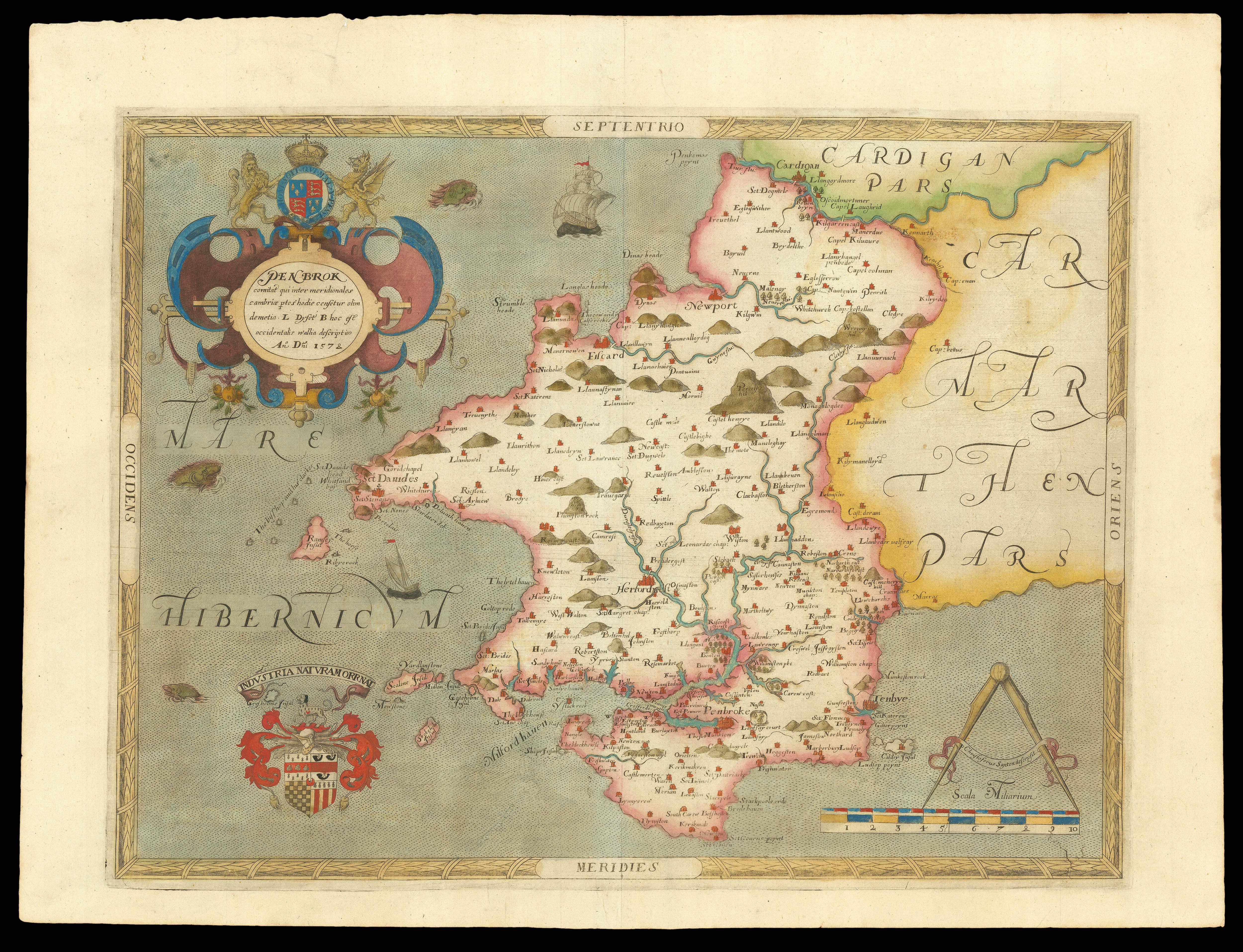
[Essex] Essexiae comitat nova vera ac absoluta descriptio An. Dnu. 1576
- Author: SAXTON, Christopher
- Publication place: London
- Publisher: Christopher Saxton
- Publication date: 1579.
- Physical description: Double-page engraved map, fine original full-wash colour, contemporary annotation on verso in brown ink.
- Dimensions: 420 by 550mm. (16.5 by 21.75 inches).
- Inventory reference: 15359
Notes
In 1575, Christopher Saxton was authorised by the Queen’s Privy Council to survey and map the counties of England and Wales, a task which he had completed by 1579, when the resulting maps were compiled and published in his seminal Atlas of England and Wales. This map of Essex is one of the 35 maps included in the atlas, and the first county map of Essex ever to be produced. It records the county’s landscape and settlements, represented by small illustrations of Churches, enclosed parklands, rivers, bridges, and the occasional hill. Details of the surrounding counties, labelled with their Latin names, are also included, most prominently London, represented by a mass of buildings, intricately illustrated. Saxton has also expressed certain features of Essex which would be of interest to the crown, such as the Blockhouse Fort on Mersea Island, an unlabelled beacon South West of Colcester, and New Hall in the crown estate of Boreham, previously home to Queen Mary. Alongside its administrative function, Saxton’s county maps were commissioned as a tool for defensive planning, and for this reason coastal areas receive particular attention. Lord Burghley, then Secretary of State, annotated his personal proof copy of the Essex map with details about coastal settlements and local gentry, noting ‘Heyghfeld fayre and fatt, Barndon park better than that, Coppledon beares a Crown, Copthall best of all’. Illustrations of Elizabethan ships and one suspect sea-creature in the ocean attest to the decorative purpose of this map, as well as its functionality.
An elaborate cartouche dominates the lower right corner of the map, with the Latin county name flanked by caryatids and surmounted by the royal coat-of-arms and motto. Directly below this is the heraldic crest and early Latin motto of the Seckford family, in honour of Saxton’s patron, Thomas Seckford. Found underneath the crest is the map’s scale. A small banner along the lower border identifies Saxton as the cartographer, but the name of the engraver is omitted from this map. There is no evidence that Saxton himself took any part in the engraving of the copper plates used to make his maps, instead employing a small team of Fleming and English craftsmen. Additionally, like all the maps in Saxton’s ‘Atlas of England and Wales’, this map bears his watermark, a bunch of grapes, to identify the work as original.
 Rare Maps
Rare Maps  Rare Atlases
Rare Atlases  Rare Books
Rare Books  Rare Prints
Rare Prints  Globes and Planetaria
Globes and Planetaria 










